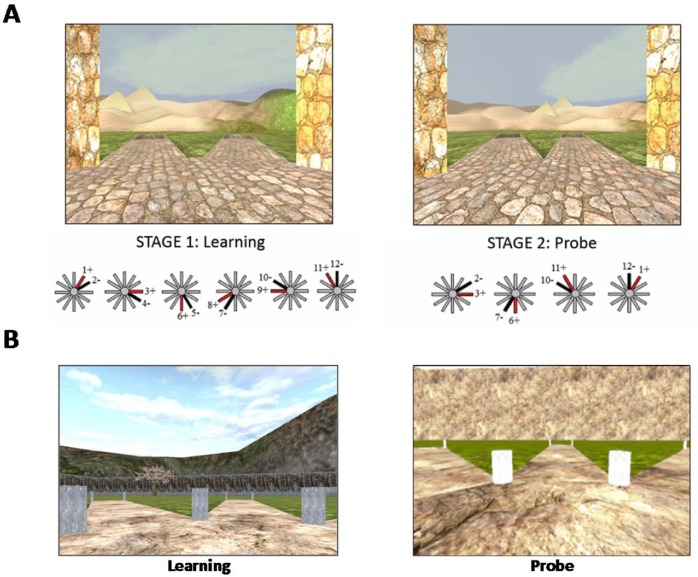Figure 1.
Virtual navigation tasks. (A) The Concurrent Spatial Discrimination Learning Task (CSDLT) consists in a 12-arm radial maze surrounded by landmarks. The paths are divided into six pairs of paths. In the learning stage (left), participants are presented with each pair and have to learn which paths contain an object, by using either a spatial memory strategy or a stimulus-response strategy. Once participants learn the task to criterion, they are taken to the probe stage (right), where the paths are recombined into new pairs of adjacent paths. However, the objects remain in the same paths. Those who used a spatial memory strategy during learning make fewer errors, as they learned the precise spatial relationship between the target arms and the landmarks. Those who used a stimulus-response strategy make more errors, as the motor action that they learned will lead them to the incorrect path when presented with the learned stimulus. (B) The 4-on-8 Virtual Maze (4/8 VM) consists in an 8-arm radial maze surrounded by landmarks. In Part 1, four of the paths are blocked and four are open. Participants have to retrieve objects at the end of the open paths. In Part 2, the barriers are removed. Participants have to avoid the paths they visited in Part 1 to retrieve the remaining objects. They can learn the object locations using a spatial memory strategy or a stimulus-response strategy. Once participants learn the task to criterion, they are taken to a probe stage, where a wall is raised around the maze that hides the landmarks. People who used a spatial memory strategy during learning make more errors than people who used stimulus-response strategies, as they can no longer use landmarks to find the target paths.

